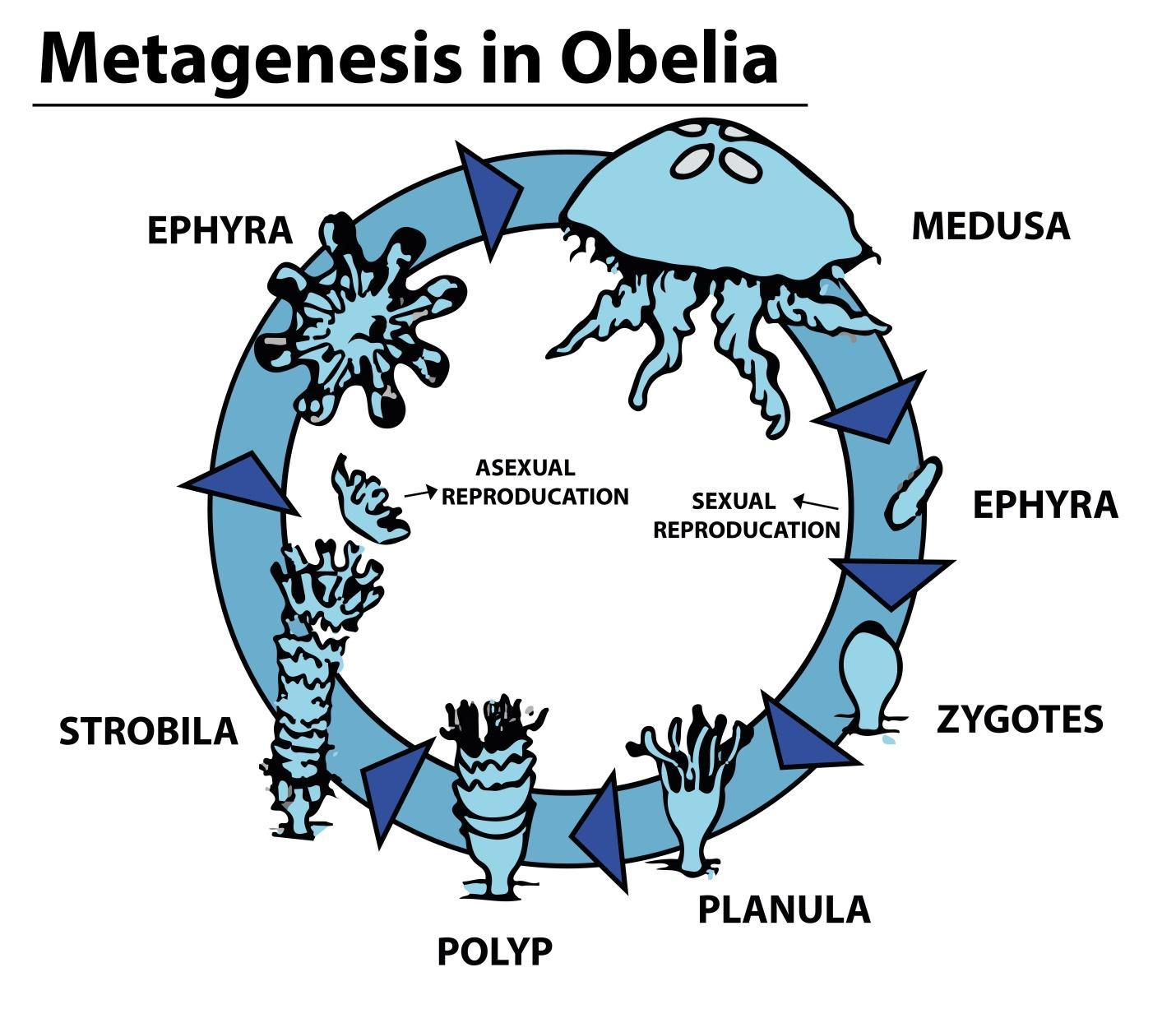
Sea fur is
(a) Hydra
(b) Obelia
(c) Adamsia
(d) Gorgonia
Answer
477.3k+ views
Hint: It is typically marine, colonial, and sedentary, having cosmopolitan distribution. And it occurs as a delicate whitish or light brown, almost fur-like growth on seaweeds or timber. It can consist of branched filaments approximately the thickness of fine sewing cotton.
Complete step by step answer:
The common name of the freshwater or marine hydrozoan Obelia is the sea fur, which belongs to the Cnidaria phylum and it has the polyp and medusa stages in their life cycle. It is settled up to a depth of 80 meters. The polyp is the metagenesis stages of obelia which represent the asexual phase which is a prominent branched hydroid colony found attached to rocks, stones, shells of animals, wooden pilings, etc. The medusa stages, on the other hand, represent the sexual phase.

So, the correct answer is ‘Obelia’.
Additional information: The stage of the obelia is a branched filament-like structure and it remains attached to the substratum. The colony is polymorphic, consisting of several individuals or zooids that are morphologically as well as functionally different from each other. The colony of Obelia consists of two portions, first one is the horizontal portion called the hydrorhiza, and the vertical portion, bearing the zooids, called hydrocaulus. Hydrorhiza is the branched structure which gives only mechanical anchorage to the whole colony. From the hydrorhiza arises the vertical hydrocaulus. Each hydrocaulus branches in an alternate manner.
Note: Hydrorhiza and hydrocaulus, both are hollow tubes which are known as coenosarc, covered externally with perisarc. Coenosarc is made up of two cellular layers, the outer ectoderm, and the inner endoderm. In between these two cellular layers, there is a thin non-cellular Meso-lamella. The coenosarc contains a tubular cavity, at the center known as coelenteron which is continuous throughout the colony.
Complete step by step answer:
The common name of the freshwater or marine hydrozoan Obelia is the sea fur, which belongs to the Cnidaria phylum and it has the polyp and medusa stages in their life cycle. It is settled up to a depth of 80 meters. The polyp is the metagenesis stages of obelia which represent the asexual phase which is a prominent branched hydroid colony found attached to rocks, stones, shells of animals, wooden pilings, etc. The medusa stages, on the other hand, represent the sexual phase.

So, the correct answer is ‘Obelia’.
Additional information: The stage of the obelia is a branched filament-like structure and it remains attached to the substratum. The colony is polymorphic, consisting of several individuals or zooids that are morphologically as well as functionally different from each other. The colony of Obelia consists of two portions, first one is the horizontal portion called the hydrorhiza, and the vertical portion, bearing the zooids, called hydrocaulus. Hydrorhiza is the branched structure which gives only mechanical anchorage to the whole colony. From the hydrorhiza arises the vertical hydrocaulus. Each hydrocaulus branches in an alternate manner.
Note: Hydrorhiza and hydrocaulus, both are hollow tubes which are known as coenosarc, covered externally with perisarc. Coenosarc is made up of two cellular layers, the outer ectoderm, and the inner endoderm. In between these two cellular layers, there is a thin non-cellular Meso-lamella. The coenosarc contains a tubular cavity, at the center known as coelenteron which is continuous throughout the colony.
Recently Updated Pages
The correct geometry and hybridization for XeF4 are class 11 chemistry CBSE

Water softening by Clarks process uses ACalcium bicarbonate class 11 chemistry CBSE

With reference to graphite and diamond which of the class 11 chemistry CBSE

A certain household has consumed 250 units of energy class 11 physics CBSE

The lightest metal known is A beryllium B lithium C class 11 chemistry CBSE

What is the formula mass of the iodine molecule class 11 chemistry CBSE

Trending doubts
Why was the Vernacular Press Act passed by British class 11 social science CBSE

Arrange Water ethanol and phenol in increasing order class 11 chemistry CBSE

Name the nuclear plant located in Uttar Pradesh class 11 social science CBSE

What steps did the French revolutionaries take to create class 11 social science CBSE

How did silk routes link the world Explain with three class 11 social science CBSE

What are the various challenges faced by political class 11 social science CBSE




